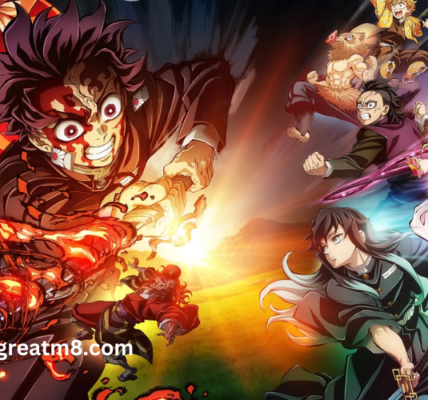Virtual reality (VR) has swiftly transitioned from a niche technology to a revolutionary force in the entertainment industry. Initially seen as a futuristic concept relegated to science fiction, VR is now reshaping the way we experience games, movies, music, and even social interactions. This immersive technology creates an interactive world that allows users to experience entertainment in a completely new dimension, blurring the lines between the real and the virtual. This article explores how virtual reality is redefining entertainment, from gaming to cinema, and beyond.
The Rise of Virtual Reality in Gaming
Gaming is arguably the sector where VR has made its most significant impact. The traditional gaming experience, which involved a screen, controller, or keyboard, has been radically transformed by VR. Now, players are no longer confined to watching their characters on a screen; they are the characters, fully immersed in virtual environments that respond to their every move.
One of the most significant advantages of VR in gaming is its ability to create a sense of presence. Players can feel like they are inside the game, exploring fantastical worlds, battling foes, or even engaging in sports activities, all from the comfort of their living rooms. VR headsets like the Oculus Quest, PlayStation VR, and HTC Vive have pushed the boundaries of what is possible, delivering high-quality, immersive experiences that were once unimaginable.
Moreover, VR gaming is not just about playing; it’s about experiencing. Games designed for VR, such as “Beat Saber,” “Half-Life: Alyx,” and “Superhot VR,” provide experiences that are vastly different from traditional games. These games leverage the 360-degree view and motion-tracking capabilities of VR to deliver gameplay that is highly interactive and physically engaging, making players feel like they are genuinely part of the game world.
Revolutionizing Cinema and Storytelling
Virtual reality is also revolutionizing the film and entertainment industry, offering a new medium for storytelling that is more immersive and interactive than ever before. Traditional films are limited by the frame of the screen and the passive nature of the viewing experience. In contrast, VR films place the viewer inside the story, allowing them to explore the environment and interact with characters and objects.
Filmmakers are beginning to experiment with VR to create narratives that unfold around the viewer, creating a sense of presence and agency that is impossible to achieve in traditional cinema. VR short films and experiences, such as “The Rose and I” and “Dear Angelica,” have demonstrated the potential of VR to tell stories in new and emotionally impactful ways.
In a VR film, the viewer is not just an observer but an active participant. They can look around, focus on different elements, and experience the story from multiple perspectives. This level of immersion can enhance the emotional impact of the story, making it feel more real and personal. Moreover, the interactive nature of VR allows for branching narratives and multiple endings, offering viewers a personalized experience that can change each time they watch.
Virtual Concerts and Music Experiences
The music industry has also begun to embrace virtual reality, using it to create unique, immersive experiences for fans. Virtual concerts and music experiences have gained popularity, especially in a world where live events are not always possible. Artists and bands are now performing in virtual venues, allowing fans from all over the world to attend without leaving their homes.
Platforms like Oculus Venues and Wave have pioneered virtual concerts, where fans can not only watch their favorite artists perform but also interact with them in real time. These virtual environments can be customized to create visually stunning shows that would be impossible in the real world, with special effects, animations, and interactive elements that enhance the experience.
Additionally, VR allows for music experiences that go beyond traditional concerts. For example, VR can be used to create immersive music videos where fans can explore the environments and interact with elements within the video. Artists like Björk and The Weeknd have already experimented with VR music videos, offering fans a new way to experience their music.
Virtual Reality and Social Interaction
Beyond individual experiences, VR is also transforming social interactions within entertainment. Social VR platforms, such as VRChat, Rec Room, and AltspaceVR, allow users to meet and interact with others in virtual environments. These platforms are more than just chat rooms; they are virtual spaces where people can play games, watch movies, attend events, and engage in various activities together.
These social VR experiences create a sense of presence and togetherness that is lacking in traditional online interactions. When users are in VR, they can see each other’s avatars, hear their voices spatially (as if they were in the same room), and interact using hand gestures and body language. This level of immersion makes social interactions feel more natural and engaging, fostering a sense of community and connection.
Moreover, social VR platforms are being used to host events that bring people together from around the world. Virtual reality conferences, festivals, and meetups are becoming more common, allowing people to connect and share experiences in ways that are not possible in the physical world. This has been particularly valuable during times when in-person gatherings are restricted, providing an alternative way for people to connect and engage.
Expanding the Boundaries of Virtual Reality
While gaming, cinema, music, and social interactions are some of the most prominent areas where VR is redefining entertainment, the technology’s potential extends far beyond these fields. VR is being used to create immersive experiences in education, training, therapy, and tourism, among other sectors. For instance, virtual reality can be used to create educational experiences that allow students to explore historical sites, dive into the human body, or even travel through space.
In the field of therapy, VR is being used to treat conditions such as anxiety, PTSD, and phobias by creating controlled environments where patients can confront their fears and learn to manage their responses. Similarly, in tourism, VR is being used to create virtual tours of destinations, allowing users to explore new places from the comfort of their homes.
As VR technology continues to advance, the possibilities for its use in entertainment and beyond are limitless. Future developments in VR hardware and software will likely lead to even more immersive and interactive experiences, further blurring the line between the virtual and the real.
Challenges and Future Prospects
Despite its potential, virtual reality is not without its challenges. The technology is still relatively expensive, and the high cost of VR headsets and equipment can be a barrier to entry for many consumers. Additionally, VR experiences require significant processing power and can cause discomfort or motion sickness in some users, limiting the audience.
However, these challenges are not insurmountable. As technology advances, VR hardware is becoming more affordable, user-friendly, and accessible. Innovations in VR design, such as lighter headsets and improved motion tracking, are also helping to reduce discomfort and motion sickness, making the technology more accessible to a broader audience.
Looking to the future, virtual reality has the potential to become a mainstream form of entertainment, much like television or video games. As VR continues to evolve, it will likely become an integral part of the entertainment landscape, offering new and exciting ways for people to experience content and connect with others.
Conclusion
Virtual reality is undoubtedly redefining entertainment, providing immersive, interactive experiences that were once the stuff of science fiction. From gaming and cinema to music and social interactions, VR is transforming how we consume and engage with content, offering new possibilities for storytelling, creativity, and connection. While there are still challenges to overcome, the future of VR in entertainment looks incredibly promising, and it is only a matter of time before it becomes a central part of our everyday lives. As technology continues to advance, virtual reality will undoubtedly continue to push the boundaries of what is possible, creating new and exciting experiences for users around the world.









